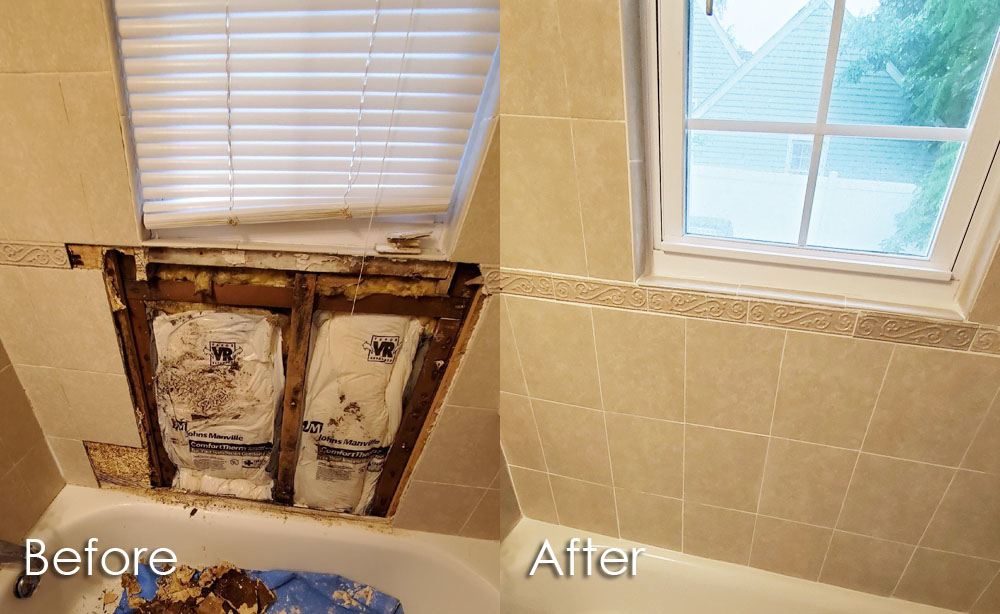Exactly How to Prevent Water Damage in Your Bathroom
Exactly How to Prevent Water Damage in Your Bathroom
Blog Article
How do you feel in relation to How to Fix a Water Damage Bathroom?

The bathroom is extremely at risk for moist accumulation and also prospective water damage due to the constant use of water in it. This article supplies basic evaluation strategies to assist spotting water damage hazards.
The regular use of water in the washroom makes it extremely prone for damp buildup and also prospective water damages. By checking it consistently, you can decrease water related damages.
The complying with collection of evaluations is simple to carry out and also should be done when in every 3 months in order to keep your bathroom in good shape and also to prevent prospective water problems triggered by the bath tub, the shower, pipeline joints and plumbing, sinks, cupboards, and also the commode
Do not overlook doing these inspections as well as be thorough while performing them. Bear in mind that these straightforward inspections can save you a great deal of cash by providing early indicators for water damages
Sinks and also Cabinets
Sinks and cupboards are subjected to dampness and humidity everyday and also are often overlooked. Examine on a regular basis under the sink and also on the kitchen counter above it. Repair any type of drip in the trap as it might recommend drainpipe issues. Check out the sink, slow draining pipes may indicate a blocked drain. Change sink seals if they are split or loosened.
Bath tub and also Shower
The shower as well as tub need unique focus and also upkeep. Examine the floor tiles and replace if cracked. Make sure that there is no missing out on cement in between the floor tiles. Inspect and also change fractured caulking at joints where the wall surfaces fulfill the flooring or the bath tub. Obstructed drains pipes and also pipelines troubles will certainly stop the bath tub from drying out as well as might suggest major issues below the bathtub. Speak with a professional quickly to stop architectural damage. Take note of discolorations or soft areas around the bath tub wall surfaces as they might suggest an interior leak.
Plumbing
Signs for water damage are tough to identify given that a lot of pipes are installed inside the wall surfaces.
Pay unique interest to flooring and wall surfaces dampness as well as spots as they may show an unseen plumbing issue. Inspect moisture degrees in adjacent spaces as well.
The Commode
The commode is an at risk water junction. Check the water lines and search for leakages around the toilet seat, in the hose, as well as under the water container. If you detect any signs of dampness on the flooring around the toilet, check for leakages in the toilet rim and storage tank seals.
Understand that hanging commode bowl deodorants raises the chances for obstructions.
TIPS TO PREVENT WATER DAMAGE IN THE BATHROOM
The average household uses approximately 80-100 gallons of water per person per day. For a family of 4, that's almost 2,500 gallons of water a week! The largest portion of this consumption comes from bathroom use. Flushing the toilet uses the most water, followed by taking a shower or bath. With that much water running through the home, water damage in the bathroom is bound to happen. Knowing how to spot signs of a water leak is essential to preventing long-term damage. This guide provides you with tips to reduce the impact of water damage on your bathroom.
CAUSES OF BATHROOM WATER DAMAGE
Pipe breaks are the most common cause of water damage we see in our daily jobs. The age of a pipe plays a large role in a pipe break as well as corrosion. Over time, the metal begins to break down, allowing water to escape. Frozen pipe breaks are also a concern in the winter months. Toilet overflows caused by paper products or children flushing inappropriate items. Degraded caulking around the toilet or bathtub can allow water seepage, sometimes behind the fixture, into the subfloor or walls. Condensation forms when the water in a pipe is cooler than the air temperature. Beads of water form on the exterior of the pipes, sometimes so much so that the water begins to drip and pool below. Sink or shower backups created by poor drainage. HOW TO PREVENT WATER DAMAGE IN YOUR BATHROOM
Inspect your toilet supply line for worn or frayed hoses and replace them as needed. Winterize your plumbing to prevent a frozen pipe break. Use vent fans to prevent condensation that can lead to mold growth. Routinely check and replace degraded caulking around your toilet or bathtub. Increase the temperature in your toilet tank and insulate your pipes during the warm summer months to keep condensation from forming. Use child safety locks on the toilets. Flush only toilet paper. "Flushable" wet wipes are actually not good for your plumbing system. Additionally, feminine hygiene products should not be flushed. Prevent water from escaping the tub or shower. Make sure shower curtains are in good condition. Inspect shower doors and replace the seal strip if necessary. Wipe up any water that accumulates on the floor and use bath mats. Water left to sit can cause damage to the tiles and flooring. Refrain from using bath products containing heavy oils to avoid a clogged drain.

Do you like reading up on Looking for Signs of Water Damage in the Bathroom? Create a remark further down. We would be delighted to know your ideas about this content. We are looking forward to see you back again soon. Those who enjoyed reading our blog entry kindly be sure to pass it around. Thanks for taking the time to read it.
Schedule Your Job Now Report this page